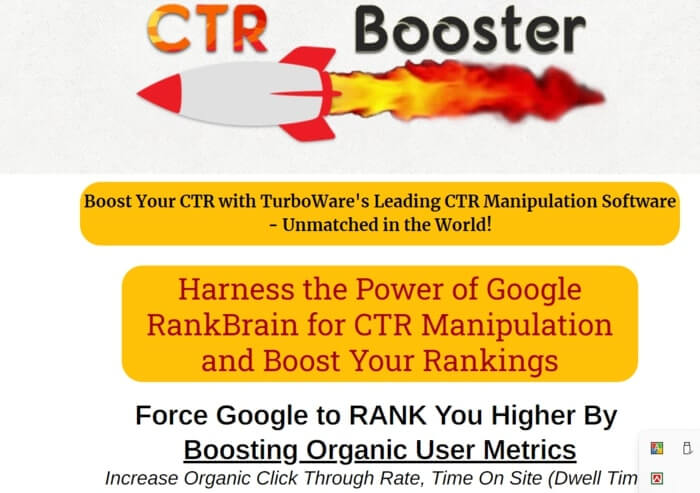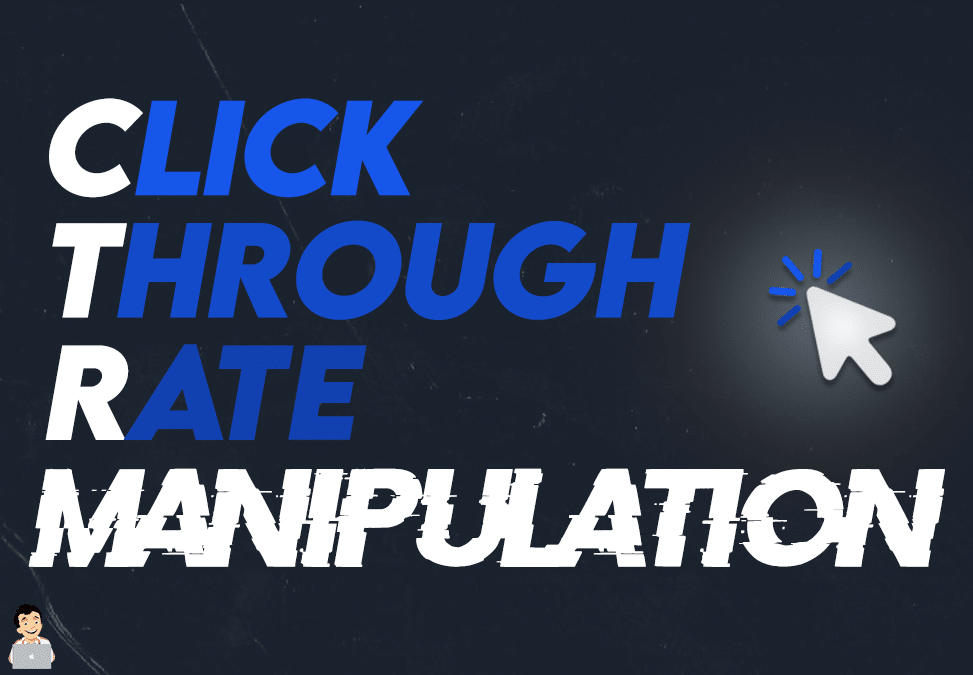Boost Your Service Visibility with Our CTR Manipulation Service
Wiki Article
Maximizing Organic Click-Through Rates With CTR Adjustment
The optimization of natural click-through prices (CTR) is a nuanced endeavor that hinges on comprehending both customer psychology and efficient content discussion. By leveraging critical control techniques, such as strongly crafted headlines and visually appealing elements, marketers can significantly enhance customer involvement. Nonetheless, the landscape is raging with mistaken beliefs and oversimplifications about what absolutely drives CTR. As we explore the ins and outs of these strategies, it becomes vital to determine the underlying concepts that can lead to sustained success in capturing target market interest. What truly establishes apart the reliable from the ineffective in this critical facet of digital marketing?Comprehending Click-Through Fees
Recognizing click-through prices (CTR) is necessary for examining the efficiency of online advertising and marketing methods. CTR determines the percent of users who click a particular link or ad compared to the overall number of customers that view it. A greater CTR suggests that the web content is involving and appropriate to the target audience, while a reduced CTR might signal a demand for optimization.To determine CTR, divide the variety of clicks by the number of impacts and multiply by 100. For example, if an advertisement receives 300 clicks out of 10,000 impacts, the CTR would be 3%. This statistics is vital for evaluating various aspects of digital marketing, consisting of search engine optimization (SEARCH ENGINE OPTIMIZATION), email projects, and social media advertising and marketing.
Furthermore, examining CTR helps marketing experts determine which strategies produce the best outcomes and which require improvement. By focusing on enhancing CTR, organizations can improve their web content's visibility and effectiveness, resulting in increased web traffic and possible conversions. Understanding the nuances of CTR is fundamental for any marketing expert aiming to enhance their online existence and make the most of return on financial investment (ROI)

The Psychology of User Actions
Customer actions is dramatically affected by emotional elements that determine just how people interact with online web content. Understanding these variables is important for maximizing click-through rates (CTR) in organic search results page. Cognitive biases, such as the anchoring impact, play an essential role in forming users' understandings. When individuals encounter information, their first perceptions can greatly influence their subsequent judgments about significance and credibility.Psychological actions also substantially impact individual actions. Content that resonates psychologically can set off a feeling of urgency or interest, motivating users to click. Furthermore, social proof-- such as customer reviews or scores-- can improve trust fund and encourage interaction, as people often look to the habits of others to notify their very own choices.
Furthermore, the principle of shortage can drive clicks - CTR Manipulation. Limited-time offers or unique web content create a fear of losing out (FOMO), compelling individuals to act promptly. Understanding these emotional motorists makes it possible for marketing professionals to develop even more compelling web content that resonates with their target audience
Efficient CTR Adjustment Methods
Leveraging emotional understandings can significantly enhance click-through rates (CTR) via targeted manipulation techniques. One of one of the most reliable approaches is using engaging headings that evoke inquisitiveness or necessity. Wording titles as concerns or integrating numbers can draw in more attention, prompting customers to click.An additional method entails maximizing meta summaries to produce a sense of relevance and immediacy. By plainly laying out the services or benefits provided in the web content, you can engage potential visitors and persuade them to click. Furthermore, utilizing power words-- such as "special," "proven," or "cost-free"-- can enhance the charm of your material.
Visual components also play a vital duty. Integrating eye-catching photos or thumbnails can attract customers in and improve CTR. A/B screening different visuals can assist identify which photos reverberate finest with your target market.
Finally, making certain that your content guarantees deliverable worth causes higher CTR. They are extra most likely to involve when users perceive that clicking will certainly supply them with meaningful understandings or remedies. By employing these techniques thoughtfully, marketing professionals can properly manipulate CTR to their advantage while keeping ethical criteria.
Common Myths Regarding CTR
Several false impressions border click-through prices (CTR) that can lead marketing professionals to make misdirected decisions. One widespread myth is that a greater CTR always equates to far better efficiency. While a high CTR suggests that more individuals are clicking, it does not ensure sales or conversions. Eventually, the effectiveness of traffic depends on the quality of the touchdown web page and the significance of the web content.One more typical belief is that CTR is an isolated metric. Actually, CTR must be reviewed in combination with other performance indications, such as bounce price and conversion rate, to acquire a holistic view of project success.
Furthermore, some marketing professionals presume that enhancing for CTR alone is adequate. However, concentrating specifically on CTR can cause clickbait strategies that may bring in clicks More hints however stop working to engage customers meaningfully. This strategy can hurt brand name online reputation and cause lower retention prices
Finally, there is a concept that CTR techniques are globally efficient. The truth is that ideal CTR strategies can differ substantially across sectors and target audiences, necessitating customized methods for various market sections. Recognizing these myths is essential for developing efficient CTR strategies that straighten with overarching advertising objectives.
Measuring CTR Success
Although high click-through prices (CTR) can indicate effective engagement with material, gauging their true success needs a detailed evaluation of several factors. First, it is necessary to Check This Out comprehend the context in which the CTR is achieved. A high CTR on a deceptive title might not translate to purposeful interaction or conversions, ultimately mirroring poorly on the brand name's integrity.2nd, evaluating the source of web traffic is crucial. Organic website traffic from online search engine can indicate a robust material method, while clicks from unimportant sources may show a lack of targeting. In addition, determining the succeeding individual behavior is essential; assessing metrics such as bounce rate, time spent on page, and conversion rates can provide much deeper insights into the high quality of the involvement started by the CTR.

have a peek at these guys
Conclusion

The optimization of organic click-through prices (CTR) is a nuanced undertaking that pivots on comprehending both individual psychology and reliable web content presentation. CTR determines the percentage of individuals who click on a specific link or advertisement contrasted to the overall number of users who view it. A higher CTR indicates that the content is engaging and pertinent to the target audience, while a lower CTR may signify a requirement for optimization.
Concentrating exclusively on CTR can lead to clickbait techniques that might bring in clicks yet stop working to involve users meaningfully. Additionally, gauging the subsequent user habits is vital; examining metrics such as bounce rate, time spent on web page, and conversion rates can give much deeper insights into the top quality of the involvement started by the CTR.
Report this wiki page